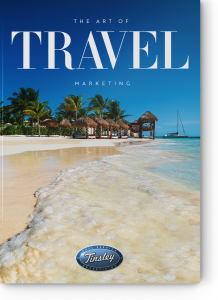How TECHNOLOGY is Changing the SOCIAL MEDIA Game for Travelers

By Giovanny Gutierrez

We may not have flying cars just yet. And Elon Musk’s hyperloop is still just a pipe dream. But make no mistake: the future of travel marketing has arrived. And today, new technologies are changing not only how people book travel, but also how, where and for how long they go.
Think about it – for many of us, travel planning takes place mostly or entirely within the online social sphere. We learn about cool places to go on Facebook, Instagram and Pinterest. We research destinations that interest us in on TripAdvisor, Yelp and Google (which now includes social media posts in search results). We book our travel on Trivago, Kayak and Expedia. And then we share our own adventures – you guessed it – right back on Facebook, Instagram and Pinterest. The irony is, the ultimate goal of using this technology is to turn off our brains for a week or more.
So does all of this mean that uploading an Instagram photo into the ethersphere every day at 2 a.m. and 5 p.m. EST (good times, by the way) is enough to give your travel brand the top of mind awareness it needs? It should only be that easy.
You see, as consumers become more digitally connected, their purchasing behavior becomes more complicated. Today’s traveler has more touch points with more brands than ever before. So while marketers need to stay on top of the shifting popularity of social platforms to capture and retain their customer’s business, you need to have a deep understanding of their intentions at every stage of the customer lifecycle. Travel companies and marketers have taken notice, and are investing millions of dollars into emerging technologies designed to help them keep up with this hyper-changing, socially interconnected world. The goal? To provide consumers with better recommendations that meet the demand for more personalized online experiences – long after the transaction has been completed.
Enter algorithms and artificial intelligence (AI). Once the stuff of sci-fi cinema (think “Blade Runner”, “War Games” and “The Matrix”), these technologies are real, and absolute game changers for social media planners. While it’s important to realize how algorithms work, it’s vital to understand that the slightest change might affect your marketing efforts. Just when companies thought they had Facebook all figured out, the social media behemoth decided it wanted more relevant user posts and less publisher content in its news feed. By changing its algorithm to “pay to play”, Facebook caught many companies with their pants, well, you know. Instagram’s change from a chronological feed to prioritizing content that receives above average engagement wreaked havoc of its own.
So what can a savvy social media marketer do to game the system? Focus content not on views and reach but engagement instead. Create valuable content that will be boosted, by making it engaging, educational, entertaining and most of all, relevant to your audience.
As the number of social media networks grows, the way consumers interact with them grows as well. Yet despite all this growth and technology, at the end of the day it’s still about people. As essential as artificial intelligence has and will become, human intelligence is still paramount. The legitimacy of your voice and the trust you instill with your message will win the day.
What does the future hold for technology? Which social platforms will reign supreme? While it’s really anyone’s guess, one thing is for sure:
Content is still king.


